Family offices are private investment firms that handle investment and wealth management for ultra-high-net-worth individuals (UHNWIs) and families. They are the top preference when it comes to managing the complexity of family wealth and affairs and key to safeguarding a family’s legacy.
With rapid developments in institutional wealth technologies, leading banks have repeatedly demonstrated how achieving digital excellence is the foundation of staying competitive and profitable. The continuous digital transformation of family offices around the globe has been further accelerated by the pandemic.
Robotic automation, for instance, is a great example of advanced technology that can be adopted by family offices to generate efficient workflows, portfolios, and much more.
In the first of our two-part series on family offices, we explore the different goals of family offices and how the digital needs of family offices can be met.
Understand your differences and leverage your advantages
A family office’s approach to digitalisation will vary depending on its nature and shifting requirements. As the name suggests, single-family offices (SFOs) fulfil the investment needs of a single family, with a heavy emphasis on efficient execution, processing, and research capabilities. SFOs may also enjoy regulatory incentives. In Singapore, for example, an SFO may apply for CMS licence exemption from the Monetary Authority of Singapore (MAS) if it carries on fund management activities solely for one family.
On the other hand, multi-family offices (MFOs) excel in terms of their expertise in investment advice and building long-lasting client relationships. MFOs are commonly subjected to higher regulation and compliance requirements, given their scale and resemblance to an external fund manager. The minimisation of manual processing through automation plays a key role in improving all-around operational efficiency. In the latter part, we will examine why one size doesn’t fit all when it comes to transforming family offices.
Selecting the most important proposition to end clients
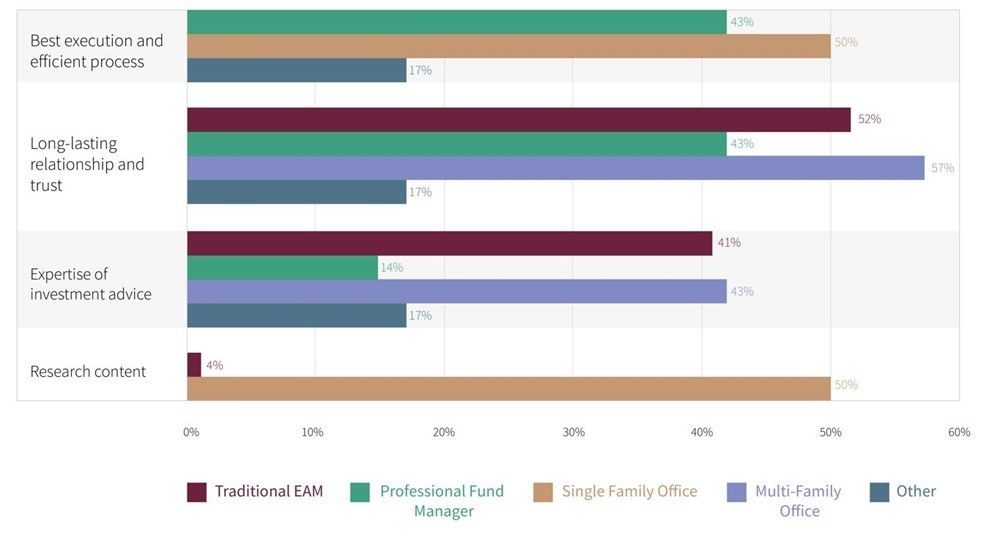
Your typical goals as a family office
While each family office has unique aspirations and identity as defined by its founders, there are five goals that most family offices strive to achieve. First and foremost, a formal governance structure must be established to provide decision-making efficiency, which in turn promotes the family’s vision, legacy, and values. Furthermore, families commonly seek scaled capitalisation from their accumulated wealth. This is where systematic management of all associated risks and customised services becomes the highest priority.
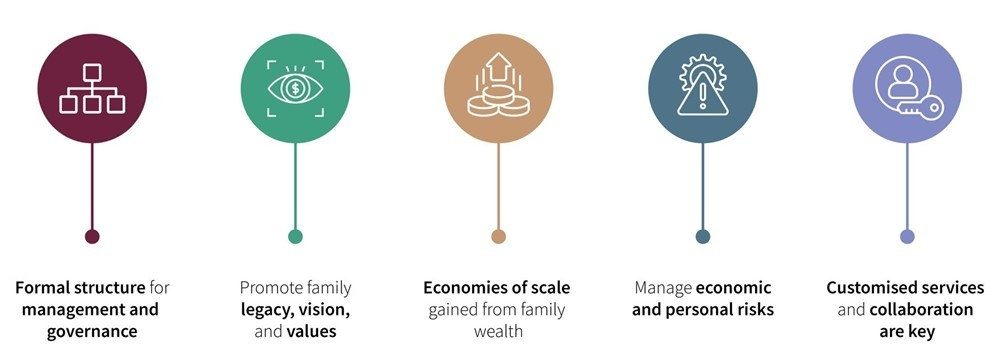
Key capabilities of thriving family offices
Family offices require end-to-end coverage of core capabilities, depending on the market maturity level, the nature of the business, and their primary objective. Automated implementation of investment strategy provides a competitive edge, enabling successful family offices to capitalise on their existing wealth and management of economic risks. Leading family offices understood the combined importance of intelligent governance, client, liability, and wealth management services to achieve all the five goals mentioned above.
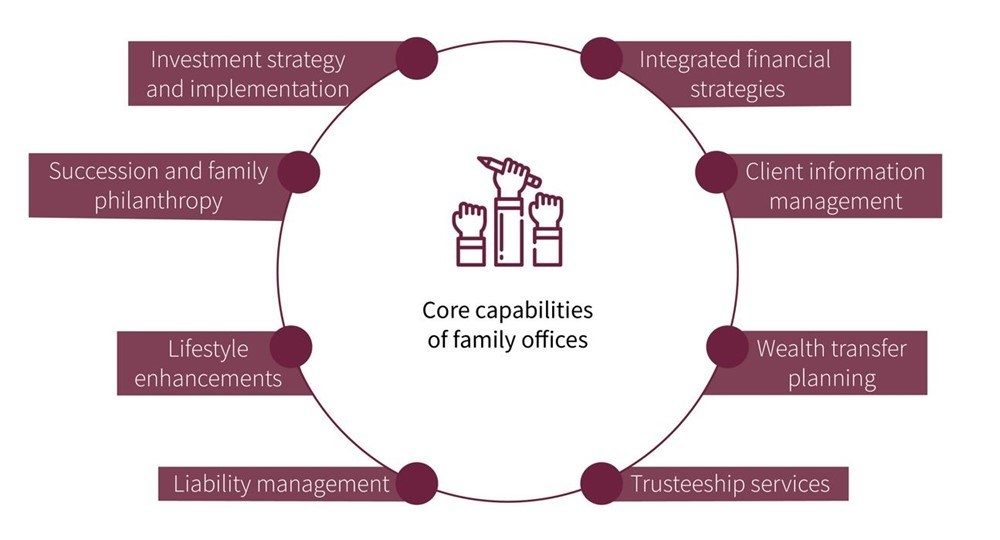
Tackling the digital needs of family offices
As shown above, family offices at different levels of maturity, with varying business emphasis, have distinct priorities and obstacles. This highlights the necessity of bespoke solutions to enhance the benefit brought by digital and process transformation. Below are three unique examples of family office demands across the Asia-Pacific (APAC) region and how Synpulse’s custom solutioning experience was effectively leveraged.
1. Establishing a fully digital family office to leverage available technology
Who was looking for what?
An Australian client was looking to establish a fully digital family office in Singapore and Luxembourg with end-to-end automation capability. Their areas of focus for this implementation were compliance, client risk management, investment management, and trade automation. Synpulse was able to develop an end-to-end IT implementation strategy to ensure the family office is at the forefront of digital innovation.
What did we do to get there?
Synpulse’s FAMILYOFFICEINABOX® (FOIAB) toolkit provided an end-to-end solution enabling the development of a modern family office with its approach focused on fulfilling all client requirements. Synpulse commenced with the performance of a strategic analysis and an as-is versus to-be analysis to understand the client’s unique vision and mission.
This was followed by a proven approach of vendor evaluation, selection and implementation, which enabled phase one to be efficiently completed well within the desired timeframe. Synpulse’s exclusive FOIAB processes also offered the family office readily available workflows that were customised to focus on their target operating model.
Vendor partnerships and integrations
Synpulse’s technical expertise and partnerships with software providers played a crucial role in the smooth establishment of the client’s IT architecture landscape. For instance, Synpulse’s extensive partnerships empowered financial institutions to deliver a fully digital, best-in-class customer experience for family offices in AML/KYC and risk monitoring. Synpulse’s in-house IT architects also provided critical support for the integration and implementation of family office software.
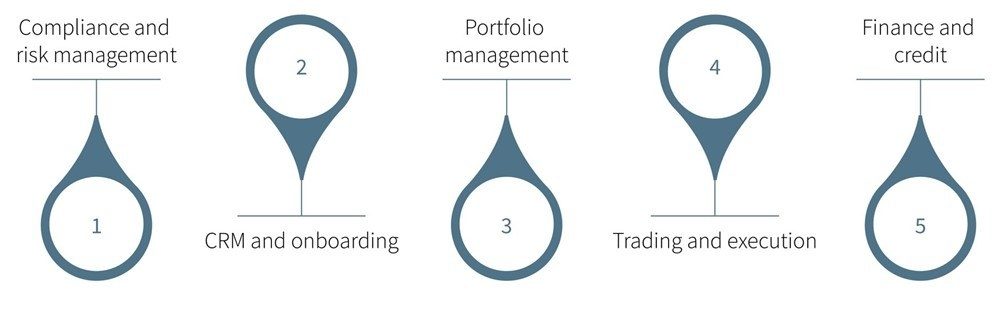
2. Refining family office operations and processes
Who was looking for what?
An investment advisory firm based in Hong Kong was seeking ways to improve its investment reporting process. The firm’s lack of established processes and an automated reporting system gave rise to a constant struggle in the production of quality periodic statements.
They sought to understand, refine, and optimise their reporting processes, which are used in both client and fund management reports. The common problems for family offices include their small size and lack of resources for analysing workflow and improving efficiency.
What did we do to get there?
Synpulse was approached for its expertise in process optimisation and understanding of family office pain points. The team engaged closely with the client as to taking charge of the actual statement production to delineate its end-to-end process.
We understand that digital excellence does not always require major IT transformation. Simple and direct technological solutions were the centrepiece of this engagement, which involved:
- As-is and to-be analysis
- Process refinement, robotic process automation
- Target operating model (TOM) analysis
Synpulse’s extensive knowledge of TOM development for family offices facilitated the accurate portrayal of the client’s governance framework for reporting purposes. Rapid automation of workflows around the firm’s legacy system was made possible by robotic process automation. It was leveraged to identify bottlenecks and streamline reporting processes to increase operational efficiency.
Ultimately, workflow optimisations are a commonly overlooked aspect of traditional family offices, regardless of their size. Process refinement unequivocally influences a family office’s sustained success.
3. Legacy platform transformation
Who was looking for what?
A Singapore single-family office was using a legacy technology platform as the foundation of its trade management and reporting processes. Its heavy reliance on manual workflows impeded its operational effectiveness and limited its future scalability.
As such, the family office was looking to digitalise its entire front-to-back operating model by overhauling the following aspects, amongst others:
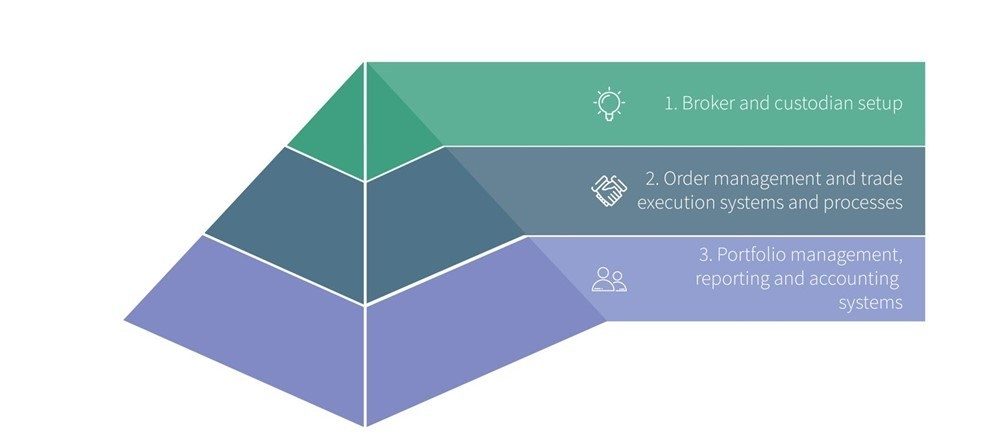
The project aimed to increase automation of the family office’s processes from 10% to 70-80% by implementing electronic workflows and providing straight-through processing throughout the entire trade value chain.
What did we do to get there?
The project timeline was split into two phases, with Phase One focused on the analysis of the family office’s broker or custodian model and Phase Two on the evaluation and analysis of the system vendor best suited to the family office.
In Phase One, Synpulse engaged the family office in fact-finding exercises to gain a comprehensive understanding of its existing systems and processes. Synpulse conducted an in-person design thinking workshop by applying how-is scenarios and a how-might-we statement with three purposes in mind:
- To visualise and understand its end-to-end trade process.
- To design and detail a revised end-to-end trade process with the incorporated stakeholder requirements.
- To identify and prioritise the client’s success criteria to measure the proposed process at the end of the project.
In Phase Two, through an analysis of the type of broker or custodian models available, Synpulse presented the benefits and risks of the different types of models to the family office stakeholders. Synpulse also conducted market research and compiled a list of potential vendors that matched the family office’s needs and offered capabilities across the trade value chain, from order and execution management systems to reporting and accounting systems. Through product demonstrations and calls, strategic options for the family office were recommended.
Setting for success, the future of family offices
To thrive in a future with increasing demands in terms of superior technology, cyber security, and remote working flexibility, family offices must pay particular attention to planning, executing, and reinforcing their business models.
Family offices must plan for horizontal offerings to support the growth of UHNWIs and vertically integrate trading and investment banking options to existing clients. They should partner and directly address pain points experienced by UHNWI families.
The key to success is reinforced by technology support and automation of routine operations.

